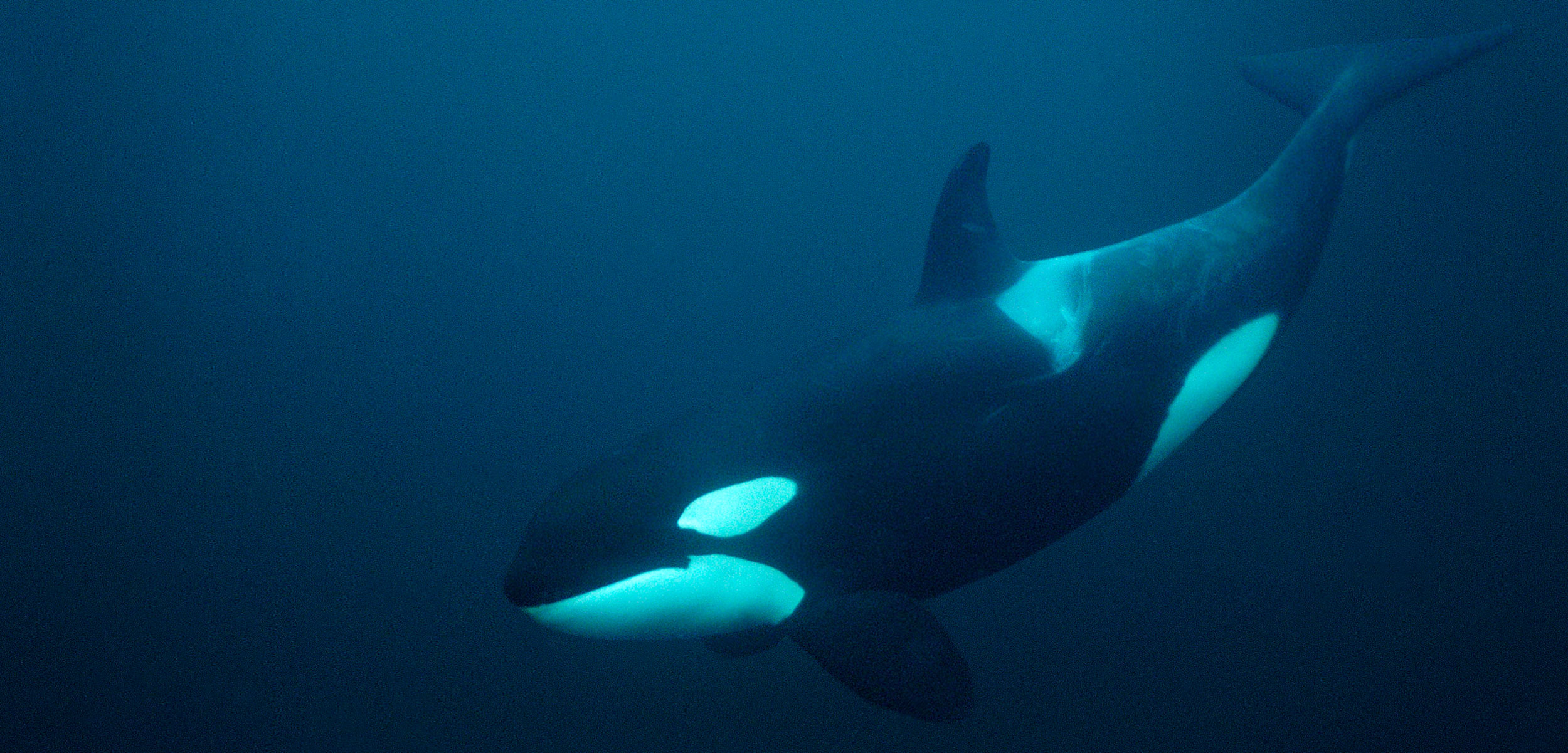A Record-Breaking Dive by a Hungry Killer Whale
Killer whales go to extraordinary depths to pilfer a meal.
Article body copy
Big factory ships arrive from around the world—Britain, Norway, Chile, New Zealand, Spain—in search of the Patagonian toothfish, the most lucrative catch in the storm-tossed southern Atlantic Ocean. Awaiting their arrival off South Georgia and the South Sandwich Islands are two pesky competitors—killer whales and sperm whales. The opportunistic hunters have learned to steal the fish off the fleet’s longlines, and they’ll go to great depths to do it.
Researchers tracked one adult female killer whale to a world-record depth of 1,087 meters. That’s well beyond the previous best for a killer whale of 767 meters, set in 2013 off the Prince Edward Islands in the subantarctic Indian Ocean. “This killer whale just blew that record away,” says Jared Towers, lead author of the new study.
Patagonian toothfish live deep in the ocean where it was assumed they could avoid predation by whales. Researchers had surmised that killer whales and sperm whales snagged toothfish off the longlines at shallower depths as the fishing lines were hauled in. But new tracking data shows that’s not exclusively the case. The whales know there is a prize waiting down there, dangling from the fishers’ hooks, and don’t hesitate to go after it. “They dive deeper, faster, and longer when they are depredating compared to when they aren’t,” Towers says.
Diving to such extreme depths takes a toll. When killer whales return to the surface, they spend hours recovering. “The whales are pushing their physiological limits,” Towers says.
Towers conducted his research in May and June of 2015 aboard the 51-meter fishing vessel San Aspiring, navigating eight-meter waves and 130-kilometer winds—the most challenging conditions of his 12 years as a cetacean researcher. “It’s like being on a different planet. No place to hide, and icebergs all over the place,” he says.
During an infrequent break in the weather, Towers was lowered off the fishing vessel in a small aluminum boat. The whales were so abundant, he had no trouble finding one. He pulled alongside the soon-to-be-record-setting killer whale and fired a crossbow to insert a satellite tag into its dorsal fin. The tag tracked the whale as it hunted and dove over the next 14 days.
The tracking study was contracted by the government of South Georgia and the South Sandwich Islands to get more information on killer whales and sperm whales, predators that eat up to an estimated eight percent of the Patagonian toothfish snagged by fishers in the area.
“It has a huge impact on the economy of these fisheries,” Towers says.
When whales start stealing fish, fishers tend to stop hauling in their lines and go fish somewhere else. For some unknown reason, stationary lines seem less attractive to the whales. The fishers will return hours later, hoping the whales are gone. “The fishermen hate it, but they have no choice but to stop fishing,” Towers says.

